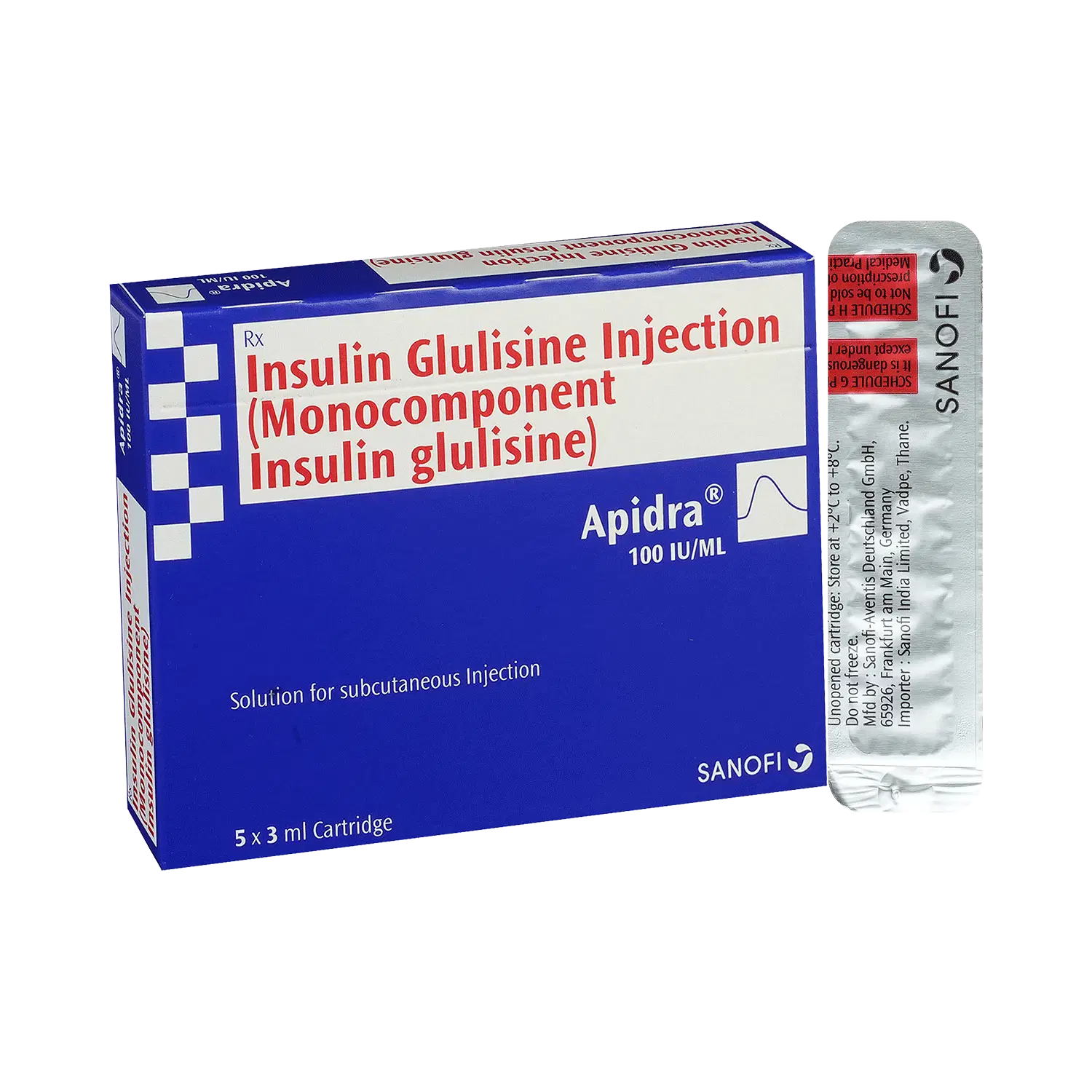
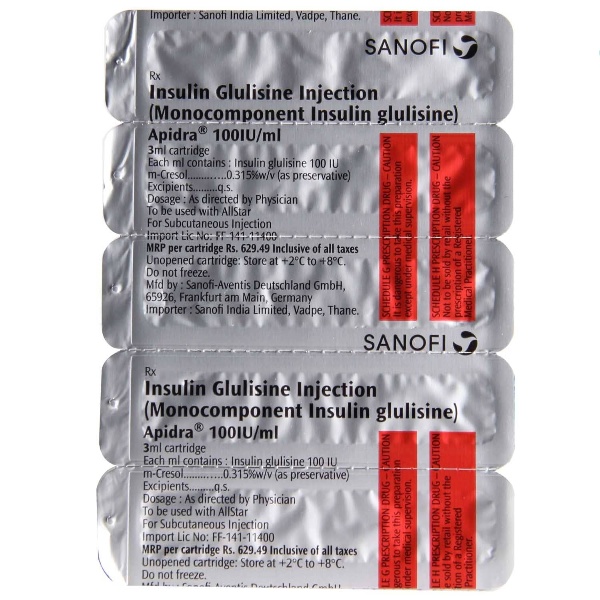
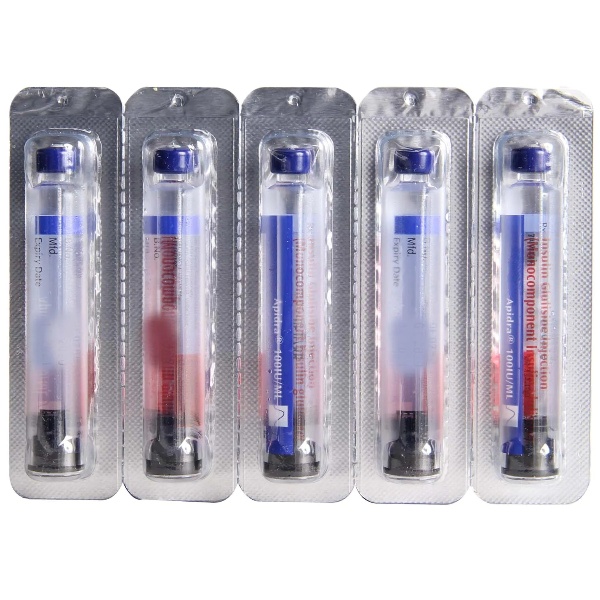
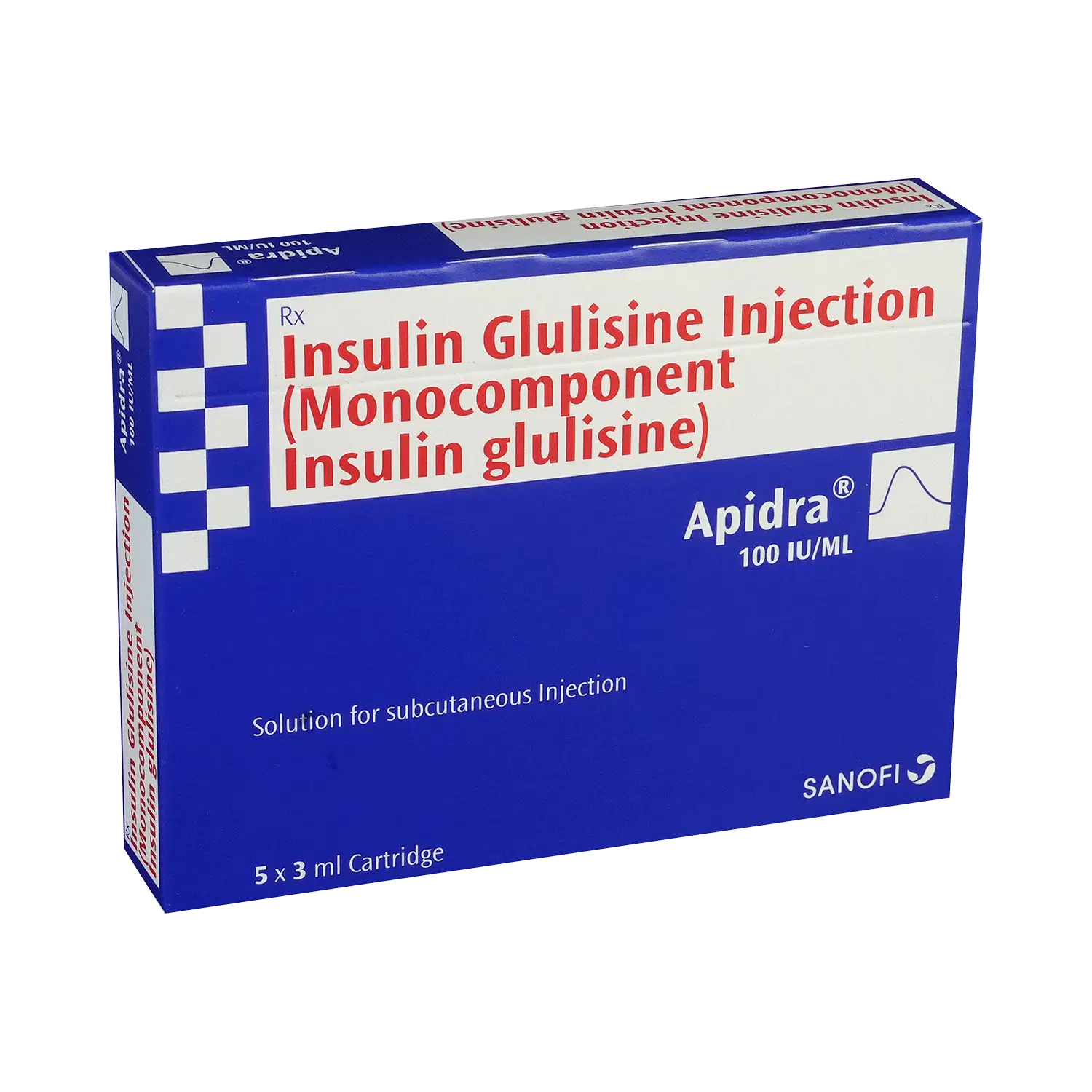

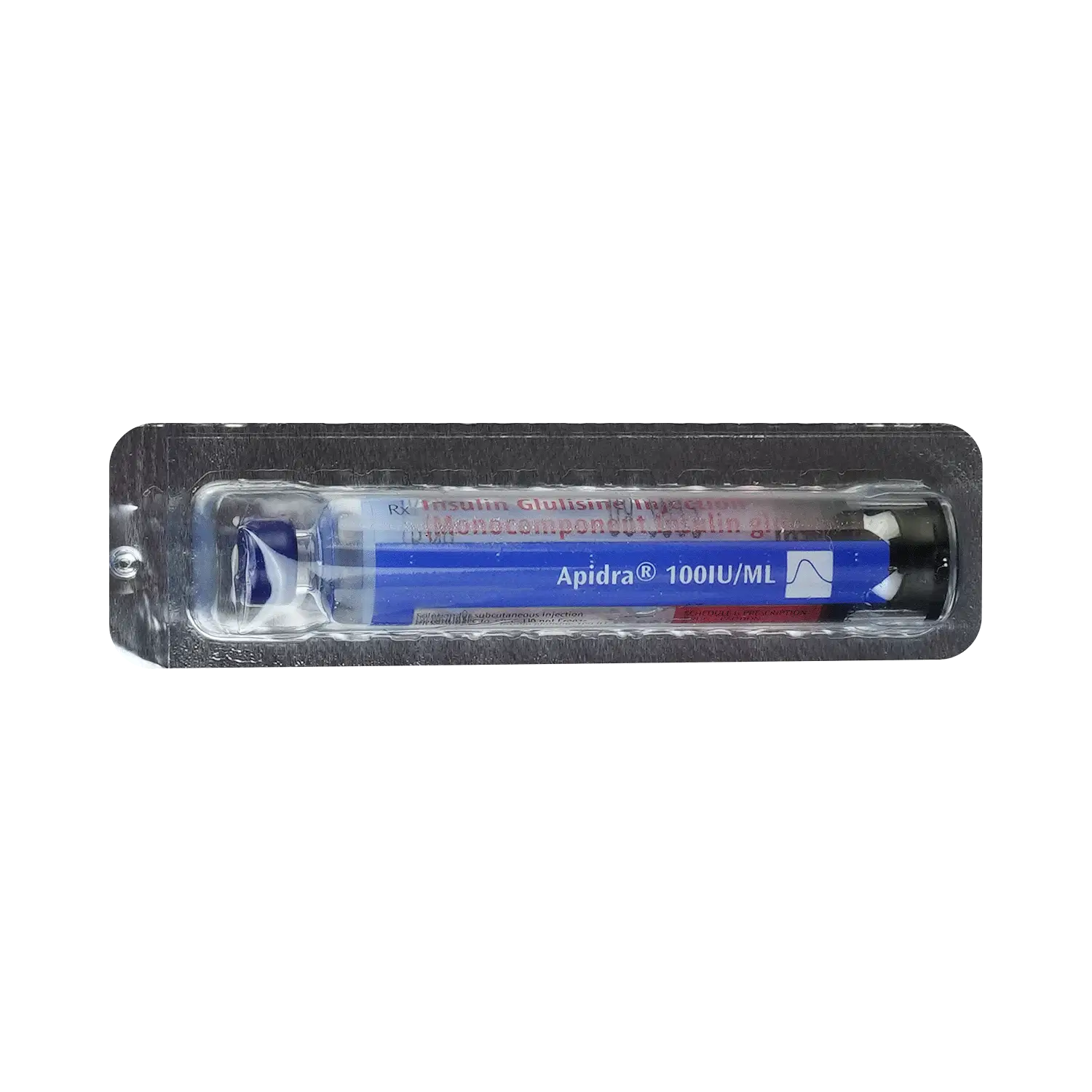
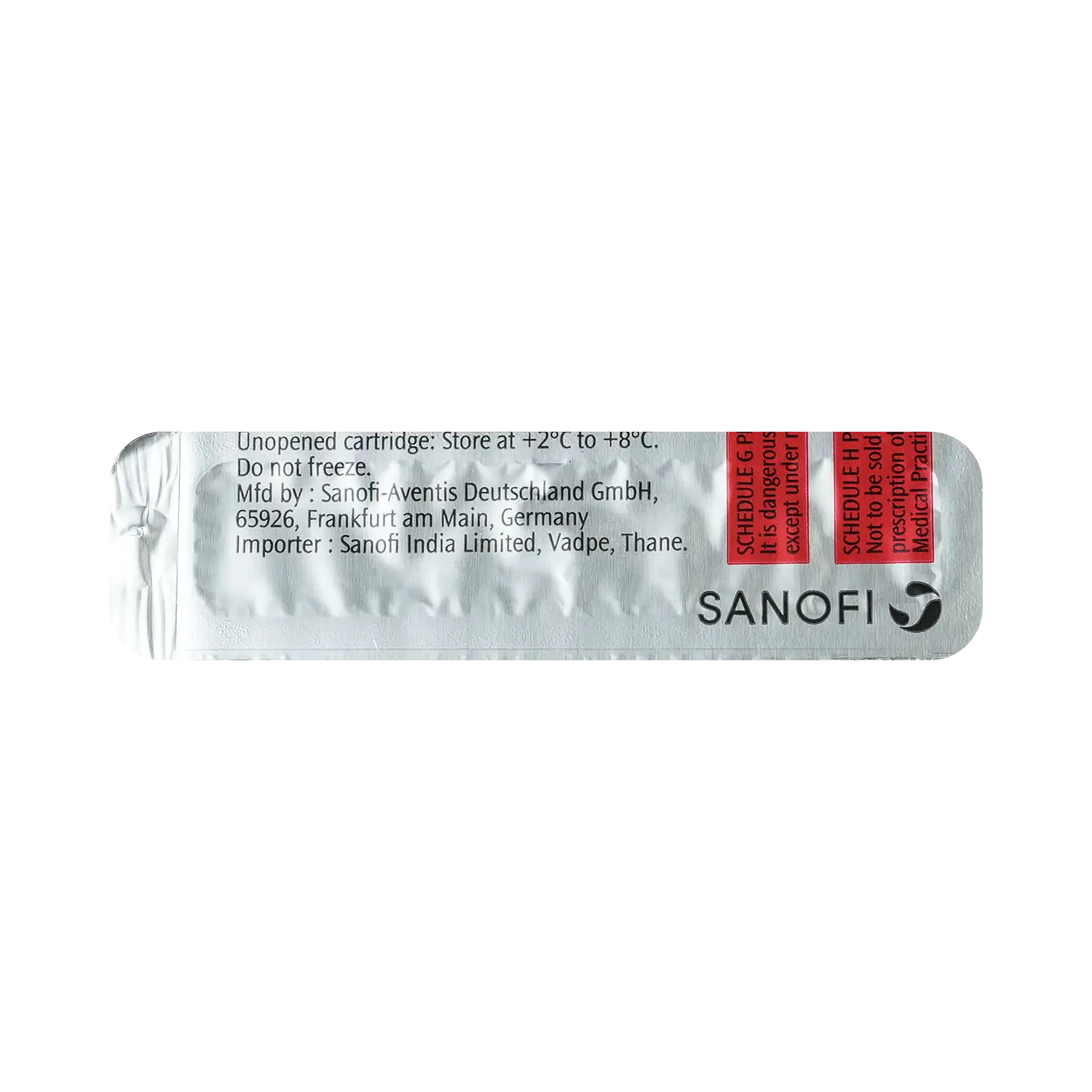

Insulin Glulisine (100IU)
StorageStore in a refrigerator (2 - 8°C). Do not freeze.
213 people viewed this recently
(Inclusive of all taxes)
Pack Size5 cartridges in 1 Pack

Apidra 100IU Cartridge is used to improve blood sugar control in people with type 1 and type 2 diabetes mellitus. It is a fast-acting type of insulin that helps to lower blood sugar levels after meals and reduce the chances of developing serious complications of diabetes. Apidra 100IU Cartridge is normally prescribed along with a long-acting type of insulin or other diabetes medicines. Your doctor or nurse will teach you the correct way of injecting it under the skin. It should be taken 15 minutes before a meal or within 20 minutes after starting a meal. Do not stop taking it unless your doctor tells you to. It is only part of a treatment program that should also include a healthy diet, regular exercise, and weight reduction as advised by your doctor. Check your blood sugar levels regularly, keep track of your results and share them with your doctor. This is very important to work out the correct dose of the medicine for you. The most common side effects of this medicine include hypoglycemia, allergic reactions, injection site reactions, lipodystrophy, itching, rash, and upper respiratory tract infections. To prevent these, it is important to always inject the correct dose of medicine, have regular meals (do not skip), and monitor your blood sugar levels regularly. Do not use this medicine when you have low blood sugar levels (hypoglycemia). Tell your doctor if you have ever had kidney, liver, or heart problems before starting treatment. Pregnant or breastfeeding women should consult their doctor before using it.
Apidra 100IU Cartridge is a modern, rapid-acting form of insulin that helps to control high blood glucose (sugar) levels. It replaces the insulin that is normally produced in the body. This helps the glucose get into your cells so your body can use it for energy. It begins to lower your blood glucose level within 10-20 minutes of injecting it and the effect can last for 3-5 hours. You will need to learn exactly how, where, and when to inject this medicine for it to be most effective. Lowering blood glucose levels helps reduce the risk of getting any of the serious complications of diabetes such as kidney damage, eye damage, nerve problems, and loss of limbs. Taking this medicine regularly along with proper diet and exercise will help you live a normal, healthy life.
Most side effects do not require any medical attention and disappear as your body adjusts to the medicine. Consult your doctor if they persist or if you’re worried about them
Your doctor or nurse will guide you how to use this medicine.
Apidra 100IU Cartridge is fast-acting insulin which starts working within 10-20 minutes after injecting. It works similar to the insulin produced by the body. Insulin facilitates reuptake of glucose in muscle and fat cells and also blocks the release of glucose from the liver.
 Alcohol
Alcohol  Pregnancy
Pregnancy  Breast Feeding
Breast Feeding Driving
Driving Kidney
Kidney Liver
LiverWe're always working to keep our product images current, but occasionally the manufacturer might update the design. No worries though!
You'll always receive the latest version available, including the freshest expiry date according to the manufacturer's stock.
Rest assured, we are happy to help!
VINAY PHARMACEUTICALS | GSTIN: 07AMZPK2533P1Z8
WB-1 ground floor, Shakarpur, New Delhi-110092, India2016-2025 © All Rights Reserved by EGMEDI In compliance with Drugs and Cosmetics Act 1940 and Drugs and Cosmetics Rules 1945 , we do not process requests for Schedule X and other habit forming drugs.
